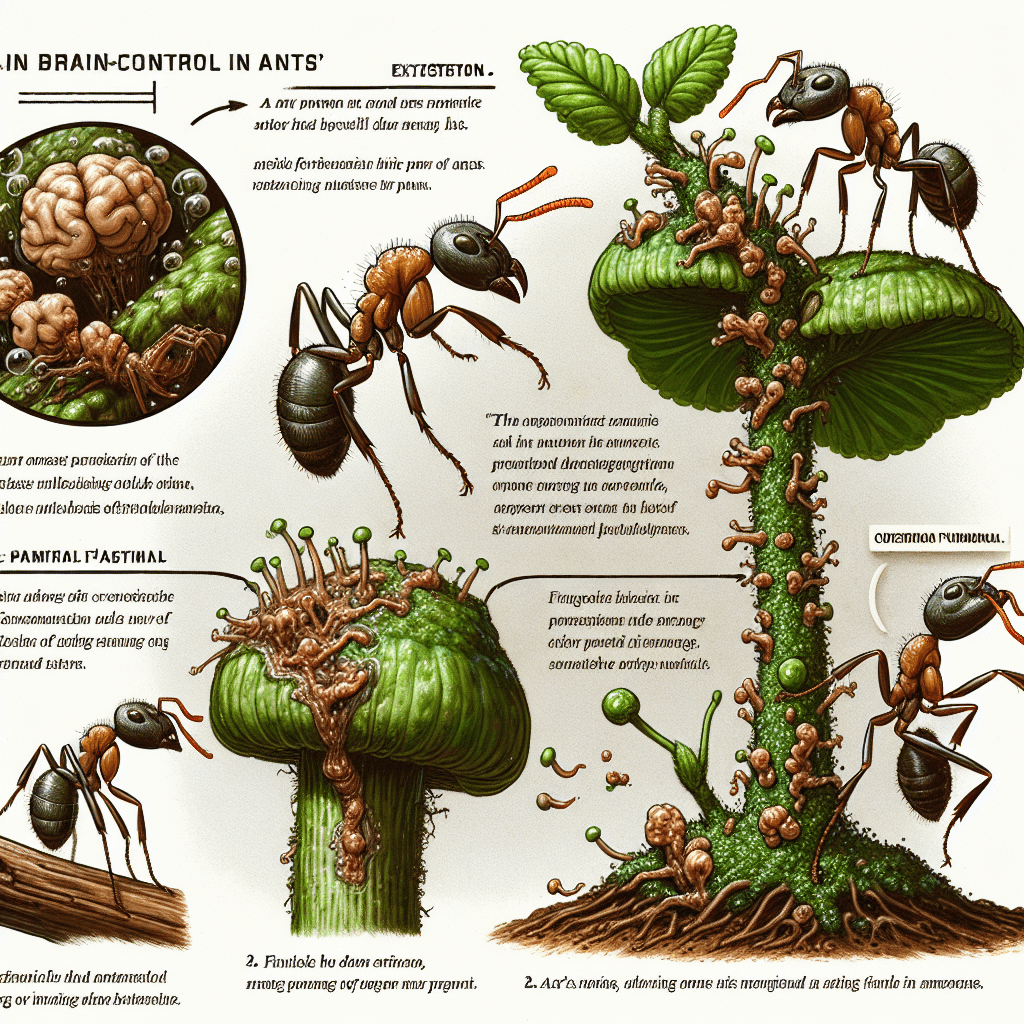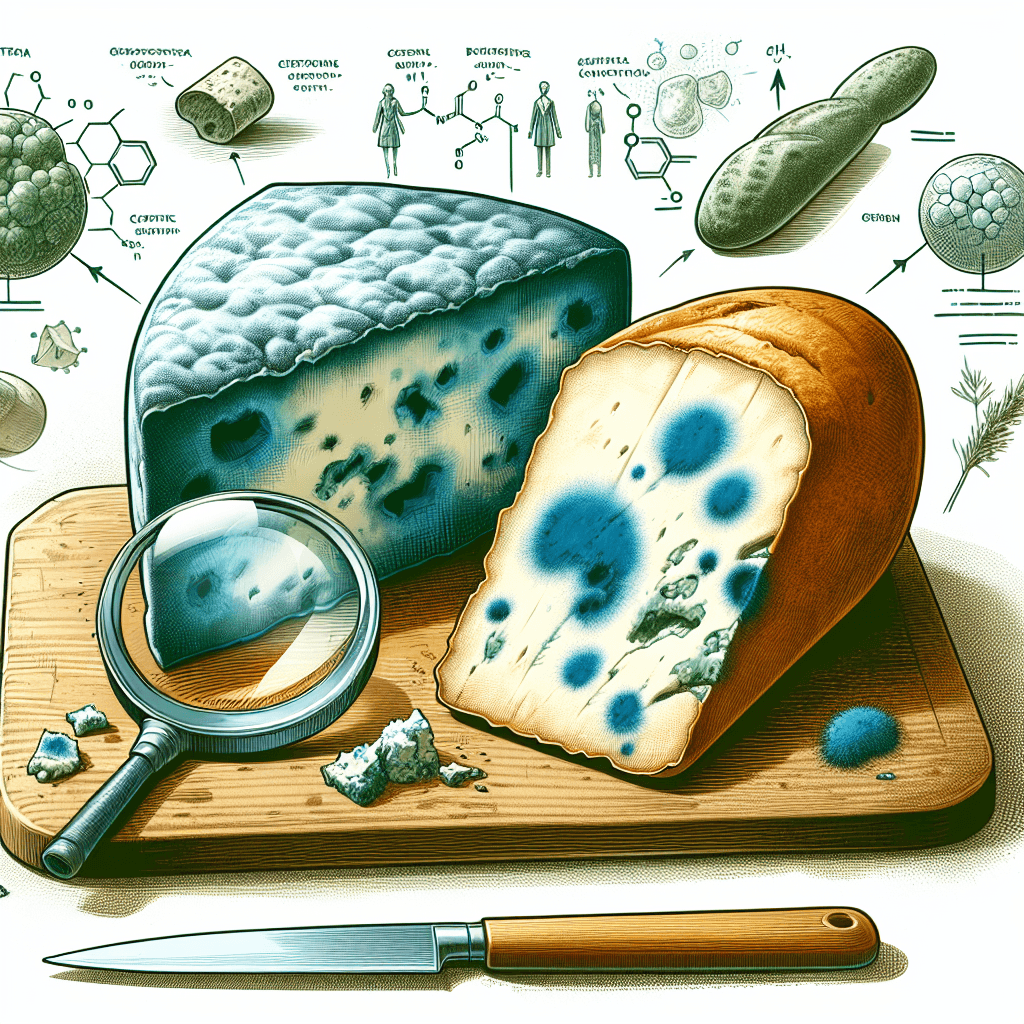Why does a fungus turn ants into brain-controlled zombies that climb plants to die
It's one of nature's most horrifying takeovers: a fungus seizes an ant's brain for one final, sinister mission. Discover the chilling evolutionary strategy that drives this gruesome death climb.


Too Long; Didn't Read
TLDR: A parasitic fungus hijacks an ant's body, forcing it to climb a plant and die in a high-up location. This elevated perch is the perfect spot for the fungus to grow out of the ant's head and rain its infectious spores down on the colony below.
Blog Post Title: Nature's Puppeteers: Why Does a Fungus Turn Ants into Brain-Controlled Zombies That Climb Plants to Die?
It sounds like a plot from a science fiction horror film: a parasitic entity infects a host, seizes control of its body, and forces it on a final, fatal mission. But this isn't fiction. In rainforests around the world, this exact scenario plays out daily for countless ants, victims of a sophisticated parasitic fungus. This bizarre relationship between the Ophiocordyceps fungus and its ant hosts is one of nature's most stunning examples of evolutionary manipulation. This post will delve into the intricate science behind this phenomenon, exploring how and, more importantly, why this fungus turns ants into brain-controlled zombies that climb to their death.
The Puppet Master: Meet the Ophiocordyceps Fungus
The villain of our story is a genus of fungi known as Ophiocordyceps. There are hundreds of different species, each highly specialized to infect a specific type of insect. The most famous of these, Ophiocordyceps unilateralis, targets carpenter ants.
The infection begins when a microscopic fungal spore lands on an unsuspecting ant. This spore penetrates the ant's exoskeleton and begins to proliferate inside its body, spreading a network of fungal cells called mycelia. For the first few days, the ant appears to behave normally. But behind the scenes, the fungus is systematically taking over, preparing for the final act of its life cycle.
The Takeover: How the Fungus Hijacks the Host
For years, scientists believed the fungus directly infected the ant's brain, seizing control of its mind. However, recent research, including studies from Penn State, revealed something even more sinister. The fungus doesn't actually invade the brain. Instead, it forms a complex, three-dimensional network that surrounds the brain and infiltrates every muscle fiber in the ant's body.
The fungus effectively creates an external "scaffolding" around the brain, leaving it intact but cutting off its communication with the body. The ant becomes a prisoner in its own head while the fungus uses its newly established network to control the ant's muscles directly. It hijacks the ant's legs, forcing it to move erratically and abandon its colony and normal foraging routes.
The "Why": A Master Strategy for Reproduction
The ant’s final journey is not random; it is a highly calculated move dictated entirely by the fungus for one purpose: reproduction. Every step of the zombie ant's demise is optimized for fungal survival.
- The Summit Climb: The fungus compels the ant to leave the forest floor and climb a plant stem or the underside of a leaf. It forces the ant to ascend to a specific height—often around 25 centimeters—where the temperature and humidity are perfect for the fungus to grow.
- The Death Grip: Once the ant reaches this ideal location, the fungus induces a final, convulsive action. The ant is forced to bite down hard onto a leaf vein or twig. This "death grip" is so powerful that it locks the ant's mandibles in place, ensuring its body remains anchored even after death.
- Fungal Fruition: With the ant secured, the fungus delivers the final blow, killing its host. It then digests the ant's internal organs for nutrients and begins its final, visible stage of growth. A long stalk, called a stroma, erupts from the back of the dead ant's head. Over the next few weeks, this stalk develops a fruiting body that releases a shower of new spores onto the forest floor below, ready to infect other foraging ants and begin the macabre cycle anew.
Conclusion
The story of the "zombie-ant fungus" is a chilling yet brilliant example of evolutionary strategy. The fungus doesn't just kill its host; it manipulates it into becoming the perfect incubator and dispersal mechanism. By hijacking the ant's body, forcing it to climb to a precise location, and securing it with a death grip, Ophiocordyceps ensures its own offspring have the best possible chance of survival. This phenomenon serves as a powerful reminder that the natural world is filled with complex, often brutal, interactions that are far stranger and more fascinating than anything we could imagine. It's not just a horror story—it's a masterclass in parasitic precision.
More Articles

Why is it safe to eat the mold in blue cheese but not on bread?
One mold is a carefully cultivated delicacy, while its cousin on your bread is growing dangerous, invisible toxins—we'll break down the crucial difference.

Why does fresh pineapple prevent gelatin desserts from becoming solid?
It's not a kitchen mistake; it's a case of culinary sabotage at the molecular level. Discover the powerful, protein-devouring enzyme in fresh pineapple that's actively digesting your dessert before it can even set.

Why are some ships deliberately fitted with metal blocks that are designed to be destroyed?
It sounds like madness, but these humble metal blocks are designed with a single, vital mission: to sacrifice themselves to the sea, preventing the ship's massive hull from being eaten alive.